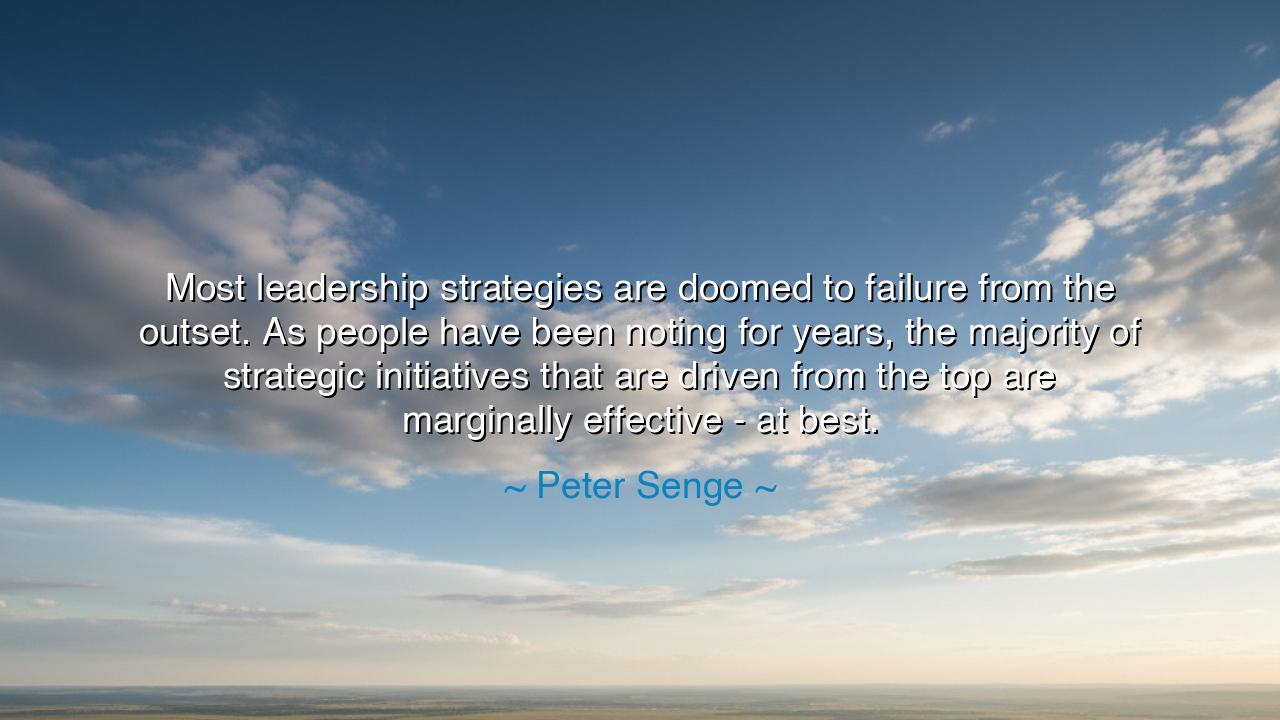
Most leadership strategies are doomed to failure from the outset.
Most leadership strategies are doomed to failure from the outset. As people have been noting for years, the majority of strategic initiatives that are driven from the top are marginally effective - at best.






Hear the words of Peter Senge, teacher of systems and seeker of deeper truths, who proclaimed: “Most leadership strategies are doomed to failure from the outset. As people have been noting for years, the majority of strategic initiatives that are driven from the top are marginally effective—at best.” This saying strikes with the weight of thunder, for it tears away the illusions of command and reveals the heart of leadership. Power from above, when unjoined to the hearts of those below, is fragile as glass. A decree may echo loudly, but if it finds no roots in the spirit of the people, it withers into dust.
The ancients understood this peril. A king who ruled by edict alone might control bodies for a season, but never souls for a lifetime. True strategy could not be imposed like chains—it had to be woven into the very fabric of the people. The great empires that endured were not those whose rulers thundered commands from thrones, but those where leaders drew upon the strength of their people, aligning vision with participation. For leadership that ignores the many is but a tree without soil: majestic in appearance, doomed in fate.
Consider the tale of Napoleon in his later years. Though once he commanded the loyalty of armies and inspired nations, as his wars stretched long and his initiatives grew distant from the will of his people, his strategies faltered. At first, his men marched for glory; later, they marched from fear. And when the storms of Russia broke them, no edict, no command from the top could restore the will that had been lost. His downfall reminds us that leadership cannot be sustained by command alone; it must kindle belief, it must live in the hearts of all.
Contrast this with the rebuilding of Japan after the Second World War. There, leaders did not dictate only from above, but engaged the workers, the managers, the teachers, the students—every hand and mind became part of the nation’s renewal. Factories thrived not because of orders, but because of shared commitment to excellence and innovation. In this way, what might have been another broken land became instead a rising star. The strategy succeeded because it was not held only by rulers, but carried by the people themselves.
Senge’s words remind us that leadership strategies fail when they are conceived as commands from on high, ignoring the wisdom and spirit of those who must live them. A true strategy must be more than a map on paper; it must be a fire in the heart. The general may draw plans, but it is the soldier who fights the battle. The manager may set goals, but it is the worker who creates the outcome. When strategies neglect this truth, they collapse beneath their own weight.
The lesson is this: if you would lead, do not stand apart from those you guide. Listen to their voices, draw from their strength, honor their wisdom. Build initiatives not as towers from the sky, but as bridges across the earth. Seek not only obedience, but participation; not only compliance, but conviction. For only when vision is shared, and when the people carry the mission as their own, does strategy become more than fragile words—it becomes living reality.
Therefore, let your practice be thus: when you plan, involve others in your planning. When you dream, invite others into your dream. When you lead, do not merely command, but inspire and empower. Ask not, “What can I make them do?” but “How can we build this together?” In this way, your strategies will not falter like hollow decrees, but endure as living movements. For as Peter Senge has shown, leadership from the top alone is frail—but leadership that flows through all is unbreakable.






AAdministratorAdministrator
Welcome, honored guests. Please leave a comment, we will respond soon